2012 Honda Civic Hybrid Review [video]

Despite being the first and closest rival to the Toyota Prius, Honda’s Civic Hybrid has never been a serious competitor to the car who’s name is synonymous with gasoline-electric transportation. True, it’s never been close enough in the fuel economy race to ever make a threat, but Honda would tell you it was never intended to be a direct rival either. The Prius is a hybrid. The Civic Hybrid is a Civic first and a hybrid second, with everything that that entails.
FAST FACTS
| 1. With a new lithium-ion battery pack and larger 1.5L 4-cyl the Civic Hybrid now gets a 44-mpg average. |
| 2. Honda’s hybrid system is less complex than most on the market and can’t power the car using just electricity. It does, however, get a start-stop system as well as regenerative brakes. |
| 3. With many fancy gadgets in the cockpit in the past, the new 2012 model gets Honda’s i-MID display screen which can be used to control everything from audio to Bluetooth and includes several screens to monitor driving efficiency. |
| 4. Outside the Civic Hybrid can be recognized by unique wheels, a rear spoiler, blue detailing on the grille and LED brake lights. |
| 5. Pricing starts at $24,050 |
44-MPG RATING IS MORE, BUT IS IT ENOUGH?
Now in its second generation, one of six new 9th generation Civic models, the hybrid is closing the gap on the Prius with an impressive 44-mpg claim. That’s not just 44-mpg highway either, but 44-mpg city, resulting in (you guessed it) 44-mpg combined.
That’s still 6-mpg short, but the 7 percent gain is enough to push it past the Insight and the Lexus CT200h to earn the Civic Hybrid the title of 2nd Most Fuel Efficient car in America; that is, if you exclude cars like the Volt or Leaf due to lack of availability, price or range anxiety.
LARGER ENGINE, LITHIUM-ION BATTERY DELIVER GAINS
Perhaps most surprising is that Honda managed to achieve this result while relying on its less advanced Integrated Motor Assist hybrid system; a more rudimentary arrangement than the two-mode hybrids used by almost every other automaker and popularized by Toyota. The big difference, however, is that Honda opted for a high-tech Lithium-Ion battery pack – quickly becoming the norm over the old Nickel Metal Hydride units. The new Li-On pack makes 7 more hp than the old model for a total of 27-hp, plus it’s roughly a third smaller in both size and weight.
The other factor is that like when Toyota moved from the 2nd to 3rd gen Prius, Honda has decided to opt for a larger displacement engine. Gone is the old 1.3-liter in favor of a larger 1.5-liter 4-cylinder. Total power output does remain the same at 110-hp, although it comes on 500 rpm earlier at 5500 rpm. A total of 127 lb-ft of torque is now also available, up 4 lb-ft from before, and it’s offered over a wider rpm range. In general this is designed to deliver added power for real world driving conditions, and while it is a step in the right direction, the difference is mostly negligible from a driver’s perspective.
A 3-mpg gain, while respectable, is hardly ground breaking and the efforts to bring the IMA system into the modern era seem excessive for the rewards.
Paired with regenerative braking and start-stop technology, drive the Civic Hybrid in traffic and it’s easy to see why Honda is going it alone with its hybrid setup. The excessively grabby brakes of the previous generation model have been fixed for a more natural feel, however, the start-stop feature is unrefined at best.
Our time spent behind the wheel delivered numbers at stark contrast to Honda’s official figures. During highway driving we easily managed 45-mpg, but stuck in Washington D.C.’s notoriously bad traffic that number dropped considerably. Not only had the 44-mpg city mark dropped out of sight, it had gone into hiding, with just 34-mpg registering on our fancy i-MID display screen.
i-MID TELEMATICS BRINGS TECH INTO THE CABIN, WITH STYLE
Equipped on most Civic models, including all Hybrid models, the Intelligent Multi-Information Display includes a 5-inch color display screen near the top of the dash and provides different screens for everything from trip and vehicle info to the audio setup (AM, FM, Satellite Radio, MP3), and Bluetooth. That last one is particularly important as the previous Civic Hybrid wasn’t available with Bluetooth.
Unique to Hybrid models are several additional screens including an Eco Score screen to rank how fuel efficiently you’re driving, plus the obligatory hybrid power flow diagram showing when the engine and electric motor are powering the wheels and when the electric battery is being recharged.
Did you know we have a community of Honda Civic enthusiasts? Check out 9thGenCivic.com!
To help achieve maximum fuel economy (not only on the hybrid but on all non-Si models) the digital display changes color from blue to green to indicate when you’re driving most efficiently. Plus, all non-Si models get a green ECON button to the left of the steering wheel that, when pressed, makes the throttle less responsive and alters the climate control operation to achieve even more mpgs. On non-hybrid models it also adjusts the transmission settings to keep the car in a higher gear. That isn’t necessary on the Hybrid as it uses a CVT.
Other features of the i-MID system include programmable wallpaper, streaming Bluetooth audio, album art displays, info on average speed, notes on maintenance and even visual turn-by-turn instructions if you opt for the Navigation system. All features can be accessed and controlled though two simple five-way controllers on the steering wheel.
In short it’s functional, easy to use and it adds plenty of perceived value to the package. After all, the Prius has had all kinds of cool screens and info displays for years – even if they were only pea-soup green.
SLIGHTLY UNIQUE LOOK
Another way in which Honda is looking to keep up with the Prius is by visually separating the Civic Hybrid from the rest of its stablemates. Many a column has been written speculating that the reason the Civic Hybrid didn’t catch on as well as it should have is because it both looks like a Civic and because it’s called one, while the Prius stood out as synonymous with the hybrid name. For 2012 it’s still very much a Civic, but looks ever-so-slightly less like one thanks to a paint-matched grille with blue accenting, a rear spoiler and LED taillights. Plus there are special 15-inch wheels and a few other minor tweaks.
Also unique to the Hybrid is a special climate control system, while inside there’s a different seat fabric and a few other trim upgrades. The organic-looking dash plastic found on all 2012 Civic models also looks more suited to this green machine. Leather is optional, although it has that wrinkled look we’ve grown accustomed to seeing (and hating) on many a General Motors product.
Overall though, the interior is very much like the rest of the Civic lineup – which is undoubtedly a good thing. For those still not sure if a hybrid is right for them, the Prius can send you running with its strange layout and joystick-operated gearshift.
Important notes for this new 2012 model include a warning that despite the smaller electric battery the rear seatbacks continue to be fixed. At least the trunk size isn’t compromised, and volume is identical to the standard sedan model at 12.5 cu-ft. Those hoping to use the car as regular transportation and who intend to make use of the rear seats will be pleased with the added 1.5-inches of legroom.
As for the drive, it is quieter than before, which we like, and while more involved than the Prius, keep your handling expectations low as, when pushed, the low rolling resistance tires make asphalt feel more like wet grass.
THE VERDICT
Much improved and boasting some new high-tech hybrid improvements, the Civic Hybrid is ultimately being kept back from greater things by Honda’s IMA hybrid system. Yes it’s the next best thing to the Prius, but like in any category of vehicle we simply can’t overlook a 6-mpg difference. In this case second is a distant second
If you’re in the market for a Civic and want the most fuel efficient Civic you can get, well, this is your car. If fuel economy is your one and only priority then look to the Prius.
Honda is nearly ready to debut some new hybrid tech that will include a plug-in option and has the potential to leap-frog rival Toyota. For their sake, and for consumers, it can’t get here soon enough.
RELATED READING
2010 Toyota Prius: First Drive
2010 Honda Insight
2011 Volkswagen Jetta TDI Review
2010 Ford Fusion Hybrid Review
2010 Volkswagen Golf TDI: First Drive
2011 Honda CR-Z Review
LOVE IT
- Improved fuel economy
- i-MID system adds value
- Everything else good about being a Honda Civic
LEAVE IT
- Rough start-stop system
- City MPGs not up to claims
- No folding rear seats

With AutoGuide from its launch, Colum previously acted as Editor-in-Chief of Modified Luxury & Exotics magazine where he became a certifiable car snob driving supercars like the Koenigsegg CCX and racing down the autobahn in anything over 500 hp. He has won numerous automotive journalism awards including the Best Video Journalism Award in 2014 and 2015 from the Automotive Journalists Association of Canada (AJAC). Colum founded Geared Content Studios, VerticalScope's in-house branded content division and works to find ways to integrate brands organically into content.
More by Colum Wood

















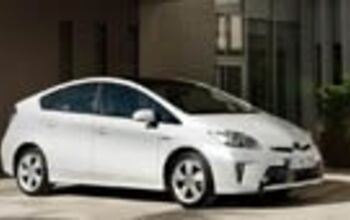
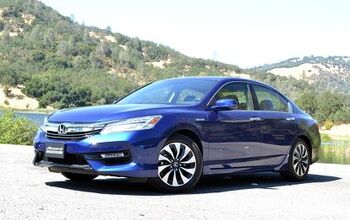
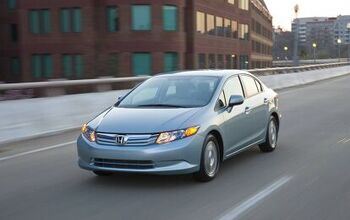
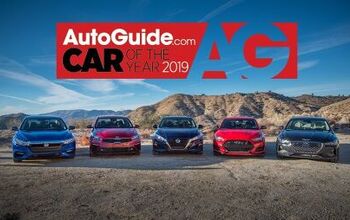
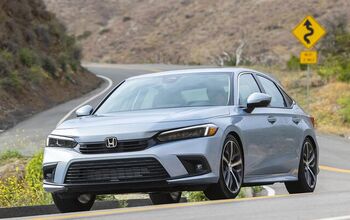



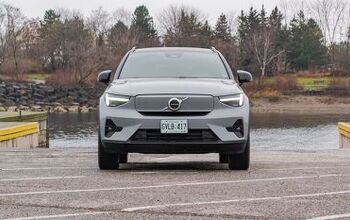
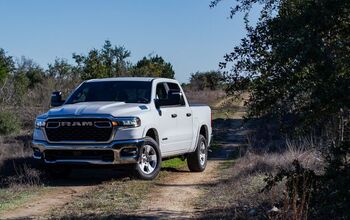


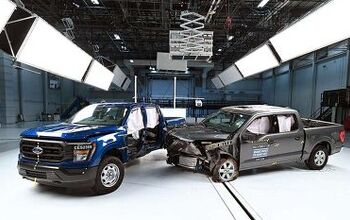

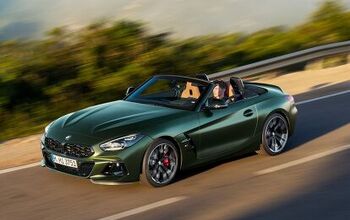
Comments
Join the conversation
Just purchased the civic over the prius. We are an older couple in our 70's. Our #1 priority was handling visibiity out the rear and sides as well as general handling in city driving. Civic won that comp rather easily. We also loved the laid back style that does not hang out any signs of Green.
I have driven the Civic and the Prius and the reviewer in this article must be Prius biased, no way does the Honda only get 34 mpg in traffic unless the dude dont know how to drive? The only thing I can say is yes the Prius gets a little more MPG, but does not drive like other cars, but the Honda is more like a conventional car.